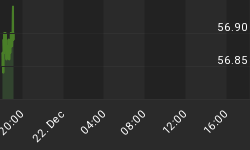Cycle analysis suggests that stocks just left behind an important low at the beginning of June: a weekly or intermediate cycle low (ICL). The nature of the rally out of this low will tell us much about what kind of price action to expect later in the year. Specifically, I am curious to see whether the market leaves behind a V-bottom or manages to perform a back-test of the ICL before continuing higher. Empirical evidence suggests that lows that get tested tend to lead to more powerful and sustained rallies, whereas V-bottoms give way within weeks or months to more vicious downside action.
But why is this so? The distinction is one related to market psychology and the behavior of big money. Small traders use technical analysis as a way to try to detect and follow the footsteps of big money, whereas the big fish are trying to create false signals and play on the emotions of the retail trader in order to either purchase larger stakes at lows or distribute their stakes at highs.
The bottom test is a classic method used by smart traders to obtain stakes from weak hands near lows. Weak hands believe they have caught a low, but when price begins sinking again and approaches or even marginally fails that low, a spike in volume is created... a panic... allowing big money to obtain large stakes without moving the market against themselves.

So why do V-bottoms signal a larger decline on the horizon? The answer lies in why these lows form without a back-test. Smart money knows that a larger decline is coming. At this point, these big players are more interested in distributing stakes than trading for a smaller-degree bounce. In other words, they have no reason to induce a bottom test and trick emotional traders out of stakes. Instead, the market rallies straight up, usually breaking to marginal, new highs, getting the retail trader excited, and allowing big money to distribute their stakes.


So if stocks rally straight up from here without testing last week's low, equity traders should proceed with caution. The action may be signaling a more pronounced crisis later in the year which could drag down equity prices in a more insidious manner. In fact, last week's pivot occurred without a spike in volume, indicating that big money was not interest in aggressively buying that low.
Furthermore, the equity market's multi-year cycle count suggests stocks are due for a decline into their 4-year cycle low. As I have discussed in the Member Letter, during secular bear markets, declines into multi-year lows tends to stretch over a 12 to 18-month period, much like the 2000-02 and 2007-09 periods. The coming summer rally may be setting the market up for the next leg down of this secular bear.















